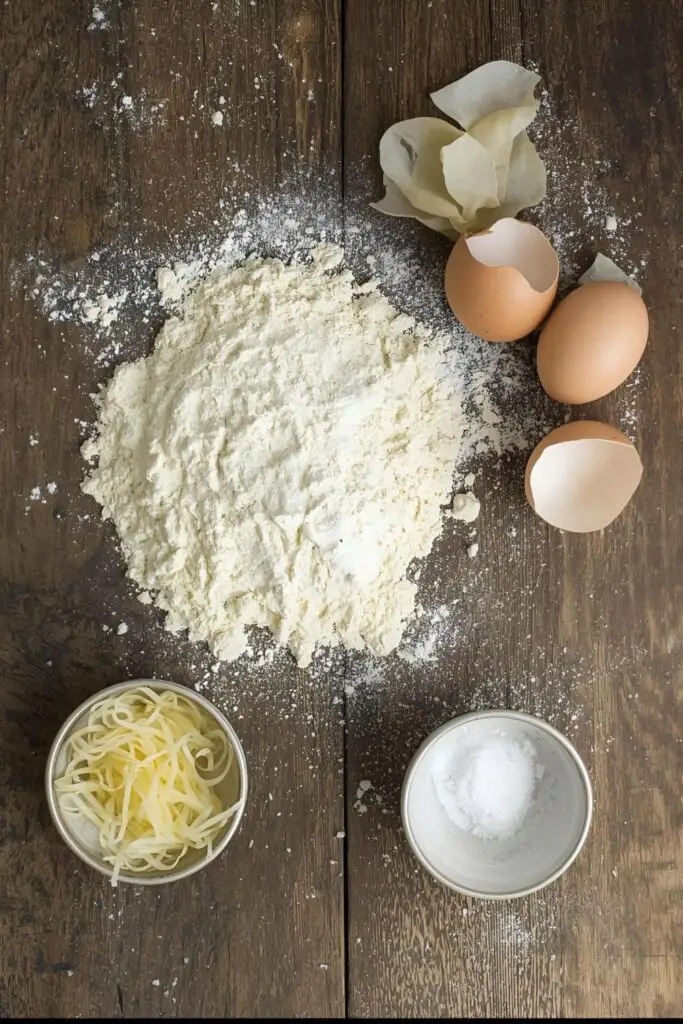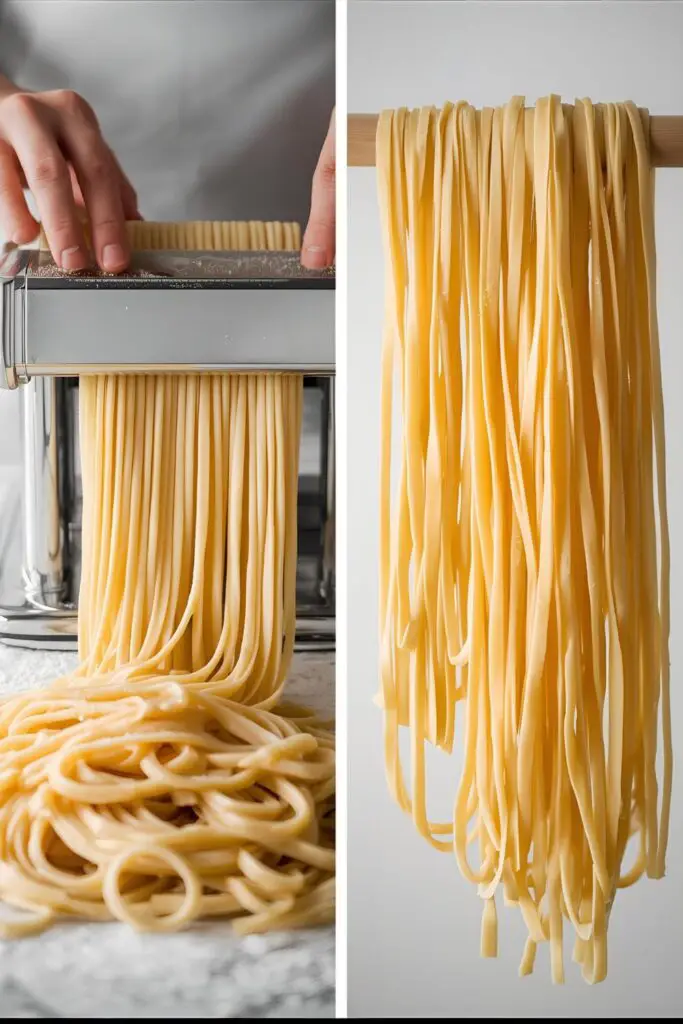Skip the Soggy Stuff: How to Make Egg Noodles That Actually Taste Like Something
Ever stare longingly at a bowl of chicken noodle soup, only to be met with a pile of sad, mushy noodles that offer about as much flavor as wet cardboard? Yeah, me too. It’s a culinary tragedy. But what if I told you that the secret to truly soul-satisfying noodles isn’t some closely guarded family heirloom recipe? Nope. It’s learning how to make egg noodles yourself. Trust me, once you taste the real deal, those limp, store-bought things will look about as appealing as a rainy Tuesday in Barishal.
Ready to ditch the disappointment and embrace noodle nirvana? Of course, you are. Making your own how to make egg noodles isn’t as intimidating as it sounds. It’s actually kind of fun, like edible arts and crafts for grown-ups. And the flavor? Forget about it. Freshly made egg noodles have a richness and a satisfying chew that will make you wonder why you haven’t been doing this all along.
Why Homemade Egg Noodles Are Your New Culinary Superpower
So, why should you trade your pre-packaged pasta for a little flour-dusted adventure? Let me count the delicious ways.
First, the flavor is just… better. Seriously. They have a richness and an eggy goodness that those pale imitations in the bag can only dream of. It’s like comparing a perfectly ripe mango to a sad, bruised supermarket version. No contest.
Second, the texture is sublime. Freshly made egg noodles have a delightful chewiness that holds up beautifully in soups and sauces. No more mushy, disintegrating strands! These noodles have character.
Finally, you get bragging rights. Imagine casually mentioning, “Oh, these? I just whipped up a batch of homemade egg noodles.” Your friends will be all like, “Whoa, are you secretly a professional chef?” And you can just smile mysteriously.
The Ultra-Simple Ingredient Lineup
You don’t need a fancy culinary degree or a truckload of exotic ingredients for this. Just a few kitchen staples.
- 2 cups All-Purpose Flour, plus more for dusting: The backbone of our operation.
- 2 Large Eggs: The key to that rich flavor and tender texture. Don’t skimp!
- 1/4 teaspoon Salt: Enhances all the flavors.
- 2-4 tablespoons Water, as needed: We’re looking for just the right dough consistency.
Your Noodle-Making Toolkit
You don’t need a pasta machine to make great egg noodles (though it can be helpful!). Here’s what you’ll need for either the manual or machine method.
- Large Mixing Bowl: For bringing our simple ingredients together.
- Fork: For initially combining the wet and dry ingredients.
- Clean Work Surface (like a countertop or cutting board): For kneading and rolling.
- Rolling Pin: Your trusty sidekick for turning that dough into thin sheets.
- Pizza Cutter or Sharp Knife: For slicing those lovely noodles.
- Pasta Drying Rack or Clean Kitchen Towels: For letting the noodles air dry a bit.
- Optional: Pasta Machine: If you’re feeling fancy (and want perfectly even noodles with minimal effort).
Let’s Get Rolling: The Step-by-Step to Noodle Nirvana
Alright, time to get your hands floury! Don’t worry, it’s more fun than it sounds.
Step 1: Whisk and Combine
In your large mixing bowl, whisk together the flour and salt. Make a well in the center of the flour. Crack the eggs into the well. Use your fork to lightly whisk the eggs.
Step 2: Bring It Together
Gradually incorporate the flour into the eggs, mixing until a shaggy dough forms. If the dough seems too dry and isn’t coming together, add water, one tablespoon at a time, mixing until just combined. Be careful not to add too much water! We want a firm, not sticky, dough.
Step 3: Knead Your Heart Out (Just a Little)
Turn the dough out onto your lightly floured work surface. Knead the dough for 5-7 minutes, until it’s smooth and elastic. It should bounce back slightly when you poke it. Don’t over-knead, though; we’re not trying to make a bouncy castle.
Step 4: The Resting Period (Patience, Grasshopper)
Place the dough in a lightly oiled bowl, turning to coat. Cover the bowl with plastic wrap and let the dough rest at room temperature for at least 30 minutes. This allows the gluten to relax, making it easier to roll out. Use this time to contemplate the delicious bowl of soup you’re about to create.
Step 5: Roll It Thin (Really Thin)
Divide the rested dough in half. On a lightly floured surface, roll one half of the dough out as thinly as you possibly can, about 1/16 inch thick. If you can almost see your hand through it, you’re on the right track. Rotate the dough frequently as you roll to keep it even.
Step 6a: Cutting Manually (The Old-School Way)
If you’re going the manual route, let the rolled-out dough sit for about 10-15 minutes to dry slightly. This makes it easier to cut. Lightly flour the surface of the dough. Starting from one short end, roll the dough up loosely like a jelly roll. Using a sharp knife, slice the roll into your desired width of noodles. For classic egg noodles, about 1/8 to 1/4 inch is perfect. Unroll the noodles and gently separate them.
Step 6b: Using a Pasta Machine (For the Tech-Savvy)
If you have a pasta machine, follow the manufacturer’s instructions to roll the dough out to the desired thickness. Then, use the noodle-cutting attachment to cut your noodles.
Step 7: Drying Time (Almost There!)
Spread the cut noodles out in a single layer on a pasta drying rack or on clean kitchen towels. Let them air dry for at least 30 minutes, or up to a few hours. This helps them hold their shape when cooked. They don’t need to be completely dry, just not sticky.
Step 8: Cook ‘Em Up!
Bring a pot of lightly salted water to a rolling boil. Add the fresh egg noodles and cook for just 2-4 minutes, or until they float to the surface and are tender but still have a slight chew. They cook much faster than dried pasta! Drain immediately.
Step 9: Enjoy Your Glorious Noodles!
Toss your freshly made egg noodles with your favorite sauce, add them to soup, or simply enjoy them with a little butter and herbs. You’ve officially leveled up your noodle game.
Calories & Nutritional Info
Keep in mind these are estimates and will vary depending on the exact amounts used and the portion size. For about 1 cup of cooked homemade egg noodles:
- Calories: Approximately 200-250 kcal
- Protein: Around 7-9g
- Fat: About 3-5g
- Carbohydrates: Roughly 35-40g
- Note: Homemade egg noodles are primarily carbohydrates, with a decent amount of protein thanks to the eggs. They’re generally lower in sodium than many store-bought options.
Common Mistakes to Avoid (Noodle No-Nos)
- Adding Too Much Water Too Soon: You can always add more water, but you can’t easily take it away. Add it gradually until the dough just comes together. A slightly drier dough is easier to work with.
- Not Kneading Enough: Under-kneaded dough will be tough and won’t roll out smoothly. Give it those 5-7 minutes of love!
- Rolling the Dough Too Thick: Nobody wants thick, gummy noodles. Aim for that paper-thin consistency. If you can see your hand through it, you’re doing it right!
- Not Letting the Dough Rest: This is crucial for relaxed gluten and easy rolling. Don’t skip the 30-minute nap for your dough.
- Overcooking the Noodles: Fresh egg noodles cook incredibly quickly! Keep a close eye on them and don’t let them turn into a mushy mess. 2-4 minutes is usually all they need.
Variations & Customizations
Feeling adventurous? Let’s tweak those noodles!
- Herbaceous Noodles: Add about 1-2 tablespoons of finely chopped fresh herbs like parsley, chives, or dill to the dough for a burst of flavor and color.
- Whole Wheat Egg Noodles: Substitute up to half of the all-purpose flour with whole wheat flour for a nuttier flavor and added fiber. You might need to add a little more water as whole wheat flour absorbs more liquid.
- Saffron Egg Noodles: Steep a pinch of saffron threads in a tablespoon of warm water for about 10 minutes. Add the saffron-infused water (and the saffron threads!) to the eggs for beautiful golden noodles with a subtle floral aroma.
Frequently Asked Questions (Your Noodle Queries Answered)
1. Do I need a pasta machine to make egg noodles? Nope! You can absolutely make delicious egg noodles with just a rolling pin and a knife. A pasta machine just makes the rolling and cutting process more consistent and efficient.
2. How long do homemade egg noodles last? Freshly made, uncooked egg noodles can be stored in an airtight container in the refrigerator for up to 2-3 days. Make sure they are well-dried before storing.
3. Can I freeze homemade egg noodles? Yes! Spread the dried noodles out on a baking sheet in a single layer and freeze them. Once frozen, transfer them to a freezer-safe bag or container. They can be cooked directly from frozen, just add a minute or two to the cooking time.
4. Why are my egg noodles tough? Tough noodles are usually a sign of over-kneading the dough or not letting it rest long enough. Follow the kneading and resting instructions for tender results.
5. My dough is too sticky. What do I do? Add a little more flour, one tablespoon at a time, and knead it in until the dough is no longer sticky but still smooth.
6. How thin should I roll the dough for egg noodles? Aim for about 1/16 inch thick. You should almost be able to see your hand through it. Thinly rolled dough makes for delicate and delicious noodles.
7. What’s the best way to cook homemade egg noodles? Bring a pot of lightly salted water to a rolling boil. Add the noodles and cook for 2-4 minutes, until they float and are tender. Don’t overcook!
Final Thoughts
Well, look at you! You’re practically a pasta pro now. You’ve conquered the simple yet satisfying art of making homemade egg noodles. Say goodbye to those bland, lifeless strands in a bag and hello to a world of rich, flavorful possibilities.
Go forth and noodle to your heart’s content! Add them to your favorite soups, toss them with a creamy sauce, or just savor their simple goodness. You might just find that once you’ve tasted the real deal, there’s no going back. Happy noodling!




